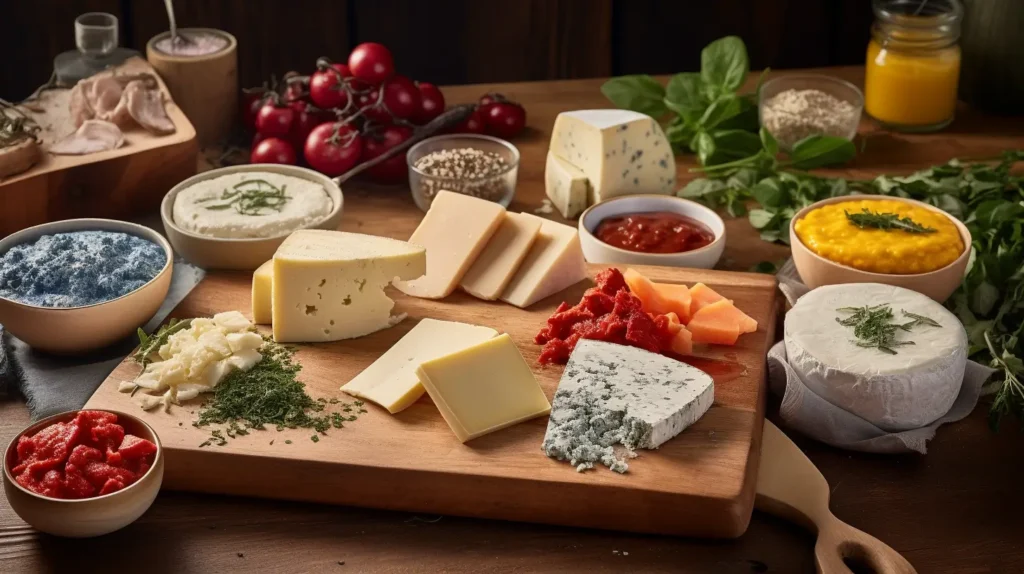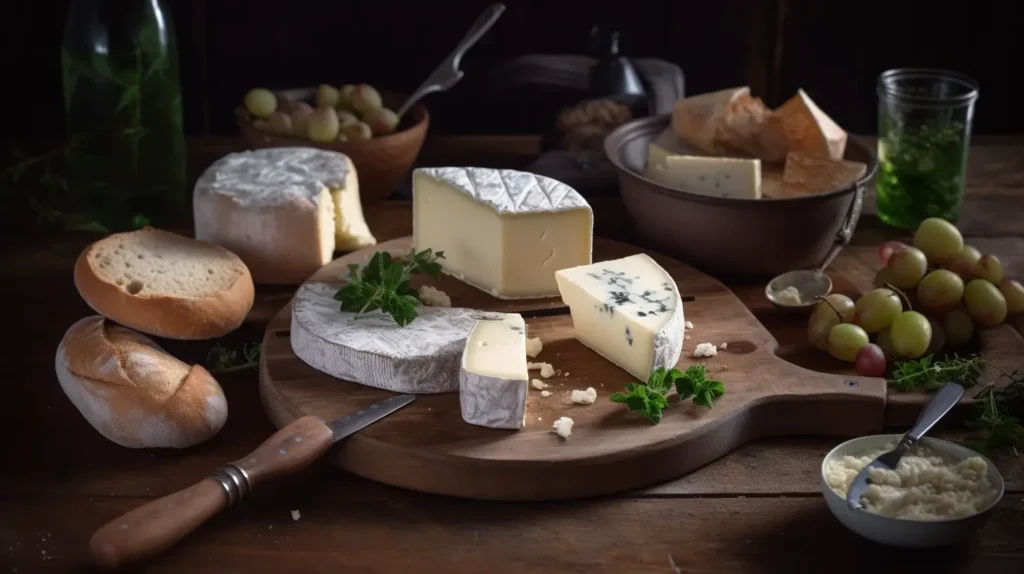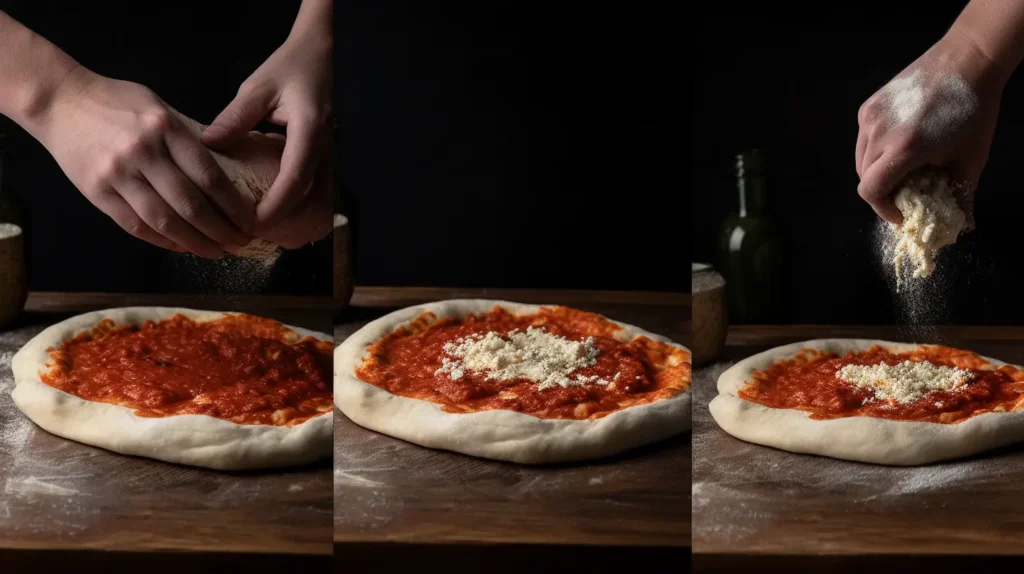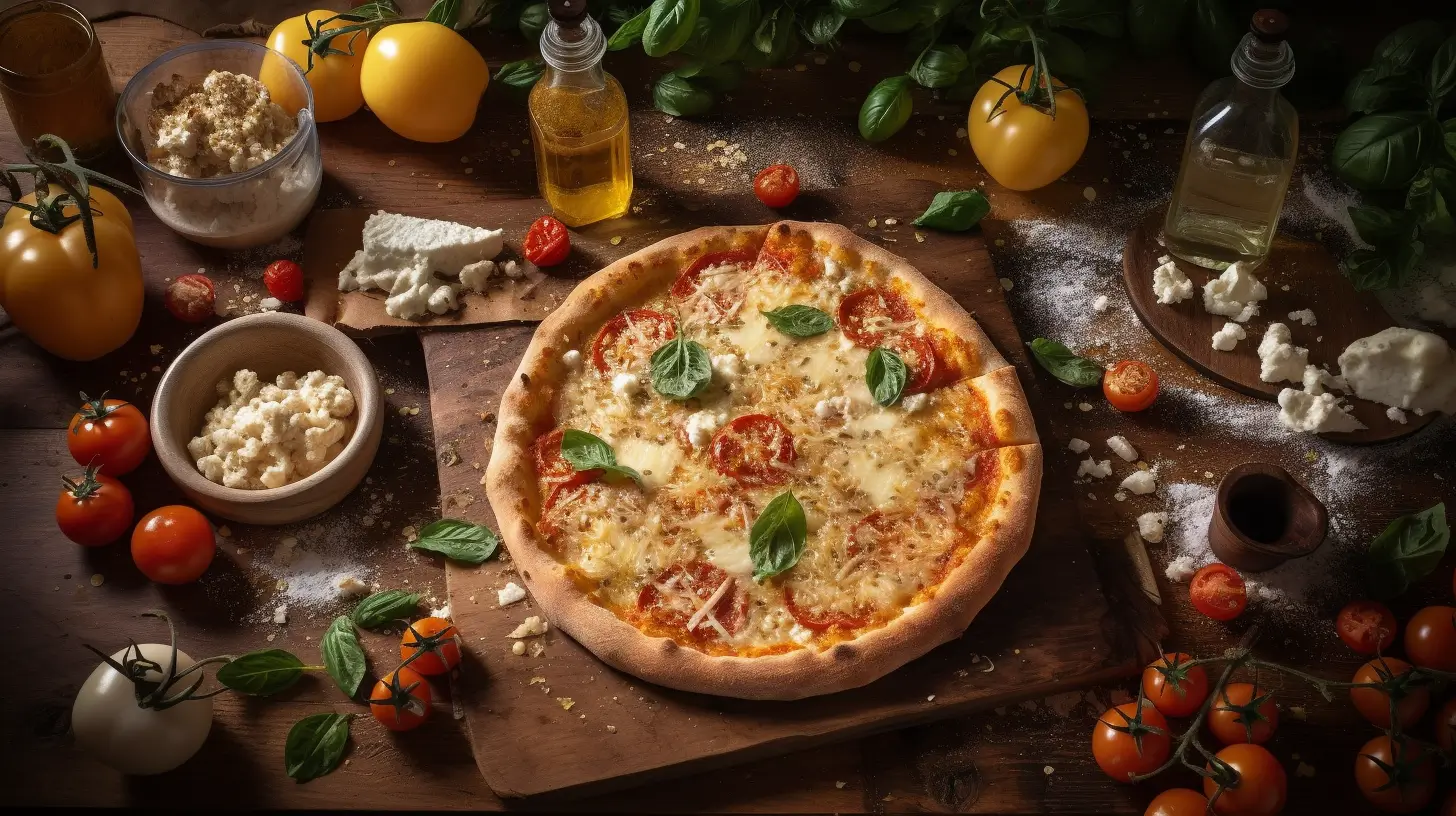Table of Contents
Introduction
There’s something magical about biting into a slice of pizza. The crispy crust, the tangy sauce, and most importantly, the cheese—melty, gooey, and packed with flavor. But have you ever wondered what type of cheese goes on pizza? Knowing what type of cheese goes on pizza can transform your homemade slices to restaurant-quality perfection. Is it always mozzarella, or are there other options that can transform your pizza game?
Whether you’re a home cook or just curious about your favorite dish, Understanding what type of cheese goes on pizza can take your culinary skills to the next level. This guide dives deep into the world of pizza cheese, from classics like mozzarella to bold alternatives like goat cheese and gorgonzola. Ready to uncover the secrets of pizza perfection? Let’s dive in! Learn how to melt mozzarella to perfection in your favorite recipes by visiting Perfect Melting Cheeses for Recipes.
What Makes Cheese the Star of Pizza?
Cheese doesn’t just add to the taste of pizza; it also plays a crucial role in the texture and experience. The answer to what type of cheese goes on pizza will affect how it melts, stretches, and satisfies your cravings. When you take a bite, the way cheese melts and stretches creates a comforting mouthfeel that’s hard to replicate. The fat content in cheese also contributes to that rich, indulgent flavor we all associate with pizza. For a guide to experimenting with flavors, check out Pizza Toppings Guide for inspiration on pairing cheese with the perfect toppings.
Moreover, cheese acts as a unifying element, tying together the sauce, crust, and toppings into one cohesive bite. Without cheese, a pizza might feel incomplete—like a sandwich missing its filling.
Finally, cheese contributes to the pizza’s appearance. That golden, bubbly crust you see when a pizza comes out of the oven? It’s the result of the Maillard reaction, where proteins and sugars in the cheese caramelize under heat. It’s a feast for the eyes as much as it is for the taste buds.
Cheese isn’t just an ingredient; it’s the heart of pizza. Here’s why cheese is essential:
- Texture: Cheese gives pizza its signature gooey stretch, making every bite indulgent.
- Flavor: It balances the acidity of the tomato sauce and complements the savory toppings.
- Visual Appeal: A bubbly, golden-brown layer of cheese makes pizza irresistible.
Knowing what type of cheese goes on pizza can transform simple dough and sauce into a culinary masterpiece. But not all cheeses are created equal when it comes to pizza, so let’s uncover the best options.
The Best Cheeses for Pizza: What Type of Cheese Goes on Pizza?

1. Mozzarella: The Answer to What Type of Cheese Goes on Pizza
Mozzarella is the undisputed champion of pizza cheese. Its mild flavor, smooth texture, and perfect melting quality make it ideal for nearly all types of pizza.
- Low-Moisture Mozzarella: This is the go-to choice for traditional pizzas, offering a balanced flavor and a satisfying stretch.
- Fresh Mozzarella: Found in authentic Neapolitan-style pizzas, fresh mozzarella has a creamier texture and subtle tanginess.
Pro Tip: If you’re using fresh mozzarella, slice it and let it dry on a paper towel for 15 minutes to prevent excess moisture from soaking your crust.
Why Mozzarella Dominates the Market
Mozzarella remains the go-to cheese for pizza for several reasons beyond its taste. First, its high moisture content guarantees it melts smoothly, creating that classic stretch we all love. Additionally, mozzarella has a mild flavor that doesn’t overpower other ingredients, allowing the sauce and toppings to shine.
From an economic perspective, mozzarella is cost-effective for pizzerias because it’s readily available and versatile. Its ability to pair with nearly every type of topping—meats, vegetables, or seafood—makes it a staple in both home kitchens and commercial establishments.
Interestingly, mozzarella’s popularity has led to innovations like pre-shredded mozzarella blends, making it even more accessible for pizza enthusiasts. Whether you prefer the fresh version for artisan pizzas or low-moisture varieties for traditional pies, mozzarella’s versatility is unmatched.
2. Provolone: A Close Companion
Provolone is a semi-hard cheese with a slightly sharp flavor. It pairs well with mozzarella to create a blend that’s creamy, tangy, and perfectly melty.
- Best For: Meat-heavy pizzas, like pepperoni or sausage.
3. Parmesan: The Finishing Touch
Parmesan cheese is rarely used as a base but works wonders as a topping. Its nutty, salty flavor adds depth and improves the overall taste of the pizza.
- Best For: Sprinkling over baked pizzas for an added burst of flavor.
4. Cheddar: The Bold Choice
Cheddar cheese isn’t as stretchy as mozzarella but brings a sharp, tangy flavor that can transform specialty pizzas.
- Best For: BBQ chicken or buffalo chicken pizzas.
5. Goat Cheese: Gourmet Goodness
For a tangy, creamy option, goat cheese is hard to beat. Its bold flavor pairs well with fresh vegetables and earthy toppings.
- Best For: Mediterranean-inspired pizzas with spinach, olives, and artichokes.
6. Feta Cheese: The Salty Twist
Feta adds a crumbly texture and salty flavor, making it a great choice for lighter, veggie-packed pizzas.
- Best For: Greek-style pizzas with tomatoes, cucumbers, and onions.
7. Blue Cheese: For the Adventurous
If you love bold, pungent flavors, blue cheese is an excellent choice. It adds a rich, creamy tang that pairs beautifully with sweet toppings like caramelized onions or figs.
Cheese Blends: Deciding What Type of Cheese Goes on Pizza
If you’re wondering what type of cheese goes on pizza to achieve that perfect gooey, flavorful bite, try combining mozzarella with Parmesan. Why stick to one cheese when you can combine several for a symphony of flavors? Here are some popular blends:
- Mozzarella + Parmesan: Classic and flavorful, ideal for all pizza styles.
- Mozzarella + Provolone: Creamy and stretchy with a slight tang.
- Cheddar + Monterey Jack: Perfect for Tex-Mex-style pizzas.
- Goat Cheese + Feta: Tangy and bold, great for veggie-heavy pizzas.
Unique Cheese Blends to Try
Experimenting with unique blends can also help you discover what type of cheese goes on pizza for a customized flavor:
- Asiago + Fontina: This duo brings a nutty richness with a creamy melt, ideal for white pizzas or four-cheese combinations.
- Gruyère + Mozzarella: Perfect for meat-heavy pizzas, Gruyère adds a buttery, slightly sweet flavor.
- Ricotta + Goat Cheese: For a light yet tangy profile, try combining these two cheeses on a veggie or Margherita pizza.
If you’re feeling adventurous, you can even experiment with smoked cheeses like smoked Gouda for a rustic, hearty flavor. The key is balancing bold flavors with mild cheeses to avoid overwhelming your palate.
Choosing Cheese Based on Style: What Type of Cheese Goes on Pizza for Each Style?
Each pizza style has its unique answer to what type of cheese goes on pizza. For instance, Neapolitan pizzas favor fresh mozzarella for its creamy texture. Not all pizzas are the same, and neither are their cheese requirements. Here’s a quick guide:
- Neapolitan Pizza: Fresh mozzarella is the traditional choice, offering a creamy texture that complements the charred crust.
- New York-Style Pizza: Low-moisture mozzarella provides the ideal melt and stretch for these foldable slices.
- Chicago Deep Dish: A mix of mozzarella and provolone creates a rich, cheesy layer.
- Gourmet Flatbreads: Goat cheese, feta, or blue cheese add a sophisticated touch.
Cheeses to Avoid on Pizza
Not every cheese works well on pizza. Here are a few to skip:

- Brie: Its high moisture content can make the pizza soggy.
- Ricotta: While delicious as a topping, it doesn’t melt well enough for a cheese base.
- Processed Cheeses: These lack the authentic flavor and texture needed for quality pizza.
Why Some Cheeses Don’t Work on Pizza
Certain cheeses, despite being delicious, don’t perform well under high heat or in a pizza’s context:
- Soft Cheeses: Brie and Camembert, while creamy, have high moisture content that can make your pizza soggy.
- High-Melting Point Cheeses: Halloumi and paneer don’t melt easily, so they lack the gooey texture we associate with pizza.
- Overly Aged Cheeses: Extra-aged cheddars or blue cheeses can become grainy when exposed to direct heat, detracting from the pizza’s smooth texture.
Understanding why certain cheeses fall short can help you avoid common pitfalls when experimenting at home.
How to Make the Perfect Pizza at Home
Making pizza at home is easier than you think! Here’s how to incorporate the cheese perfectly:

- Start with the Right Base
Make sure your crust is prepped and ready, whether it’s store-bought or homemade. - Layer the Sauce
Spread an even layer of sauce, leaving a small border for the crust. - Add Your Cheese
Distribute your cheese evenly, ensuring good coverage without overloading. - Bake at High Heat
Pizza cooks best at 450–500°F. Keep an eye on the cheese to achieve the perfect golden-brown spots. - Finish with Toppings
Sprinkle Parmesan or fresh herbs after baking for extra flavor.
FAQs About Pizza Cheese
1. What’s the most popular cheese for pizza?
The answer to what type of cheese goes on pizza most often is mozzarella. Its mild flavor and ideal melting quality make it the top choice worldwide.
2. Can I use vegan cheese on pizza?
Yes, many brands offer plant-based options that melt well and mimic traditional cheese flavors.
3. Should cheese go on top of or under the toppings?
For most pizzas, cheese goes under the toppings to prevent burning. However, some styles, like the Chicago deep dish, layer cheese directly on the crust.
4. What’s the best way to store leftover pizza cheese?
Wrap your cheese tightly in plastic wrap or store it in an airtight container in the fridge.
5. Can I freeze cheese for pizza?
Yes! Mozzarella and cheddar freeze well. Just shred them first for easy use.
6. Can I mix different cheeses to decide what type of cheese goes on pizza?
Absolutely! Mixing cheeses like mozzarella, Parmesan, and Gruyère can transform your pizza and help you discover what type of cheese goes on pizza that suits your taste.
Conclusion
Understanding what type of cheese goes on pizza empowers you to create mouthwatering combinations tailored to your taste. When it comes to pizza, the cheese you choose can make all the difference. Whether you stick to the classic mozzarella or venture into gourmet options like goat cheese or feta, the possibilities are endless.
So the next time you’re making pizza, think beyond the basics. Experiment with blends, try bold flavors, and discover your ultimate cheese combination. Your perfect slice awaits!
What’s your favorite type of cheese for pizza? Share your thoughts and recipes in the comments below—we’d love to hear from you!


Your point of view caught my eye and was very interesting. Thanks. I have a question for you.
Thank you so much for your kind words! I’m glad you found my point of view interesting. 😊 Feel free to ask your question—I’m happy to help!